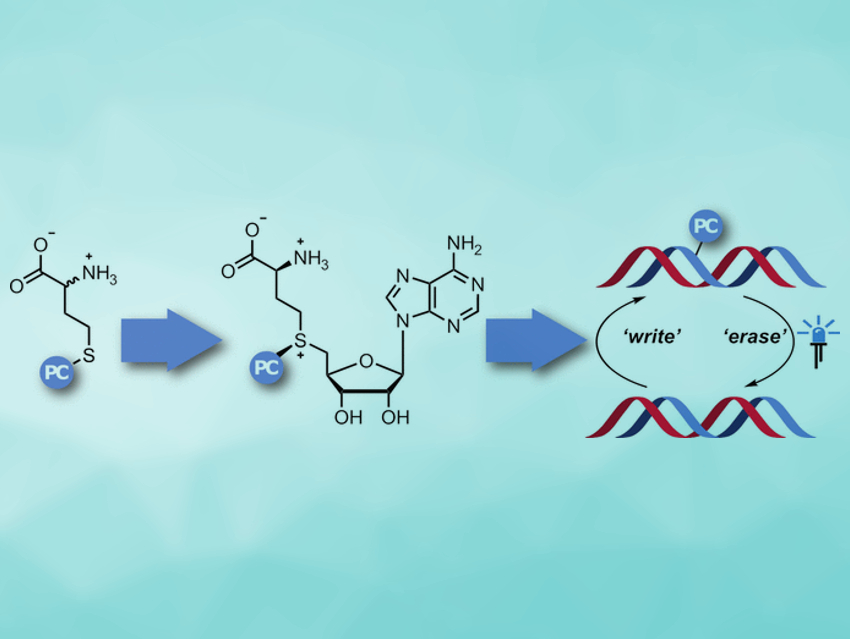The addition and removal of methyl groups on DNA play an important role in gene regulation. In order to study these mechanisms more precisely, Andrea Rentmeister, University of Münster, Germany, and colleagues have developed a new method by which specific methylation sites can be blocked and then unblocked at a precise time through irradiation with light (photocaging). The required reagent is produced enzymatically, in situ.
Gene Regulation through DNA Methylation
Although they look very different and serve completely different functions, all cells in our body have identical DNA. However, they do not use the same genes. Certain genes are turned on and others off, depending on the type of cell and the moment in time. The “switches” are chemical changes in the building blocks of the DNA. These changes are called epigenetic modifications.
One significant regulation mechanism is methylation and demethylation, meaning the attachment and removal of a methyl group. The methylation patterns of cancer cells, for example, differ from healthy cells. During a methylation, enzymes known as methyl transferases (MTases) transfer a methyl group from S-adenosyl-ʟ-methionine (AdoMet) to the target molecule.
In order to study the purpose and function of this regulation more closely and determine methylation patterns, it would be useful to have tools to specifically inhibit methylation at targeted locations and then lift the inhibition at a defined time. To this end, the team chose to use a method known as photocaging. In this method, a “photocage” is a molecule that falls apart upon irradiation, such as a 2-nitrobenzyl group. The cage first blocks the target location, then targeted irradiation with light acts as a “switch” to remove the blockade.
Enzymatic Photocaging
The idea was to equip AdoMet analogues with a photocage that is then transferred to the methylation sites. However, AdoMet analogues decompose in aqueous solutions and cannot enter into cells. Therefore, the team wanted to produce them in situ. In the body, AdoMet is produced from the amino acid methionine through the action of the enzyme, methionine adenosyl transferase (MAT). Synthesis of the AdoMet analogues requires methionine with an attached nitrobenzyl photocage and a MAT that can use such an altered substrate.
Starting with a MAT enzyme from a single-celled organism (Cryptosporidium hominis), the researchers were able to carefully change specific amino acids in the enzyme to increase the size of its hydrophobic binding cavity so that it could contain the nitrobenzyl group. A crystal structure analysis showed that the ADoMet analogue is bound in the cavity of this photocaging MAT (PC-MAT). Based on this information, the team also produced a second PC-MAT based on a thermostable MAT enzyme from the archaeon Methanocaldococcus jannaschii.
Both of these PC-MATs are compatible with DNA and RNA MTases, and made it possible to attach photocages to all natural methylation sites of a plasmid DNA. Irradiation with light removed the blockade.
- Engineered SAM Synthetases for Enzymatic Generation of AdoMet Analogs with Photocaging Groups and Reversible DNA Modification in Cascade Reactions,
Freideriki Michailidou, Nils Klöcker, Nicolas V. Cornelissen, Rohit K. Singh, Aileen Peters, Anna Ovcharenko, Daniel Kümmel, Andrea Rentmeister,
Angew. Chem. Int. Ed. 2020.
https://doi.org/10.1002/anie.202012623




